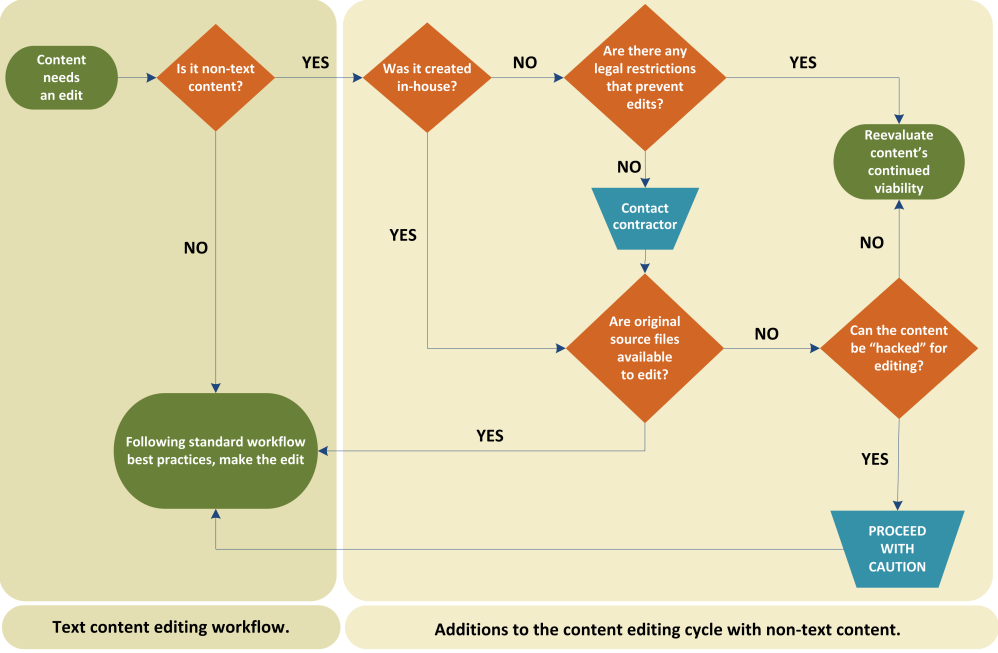I’m all for enhancing the user experience with non-text content, but only if it makes strategic sense. And only if there’s a solid maintenance plan in place. Because publishing non-text content comes with a set of unique challenges.
Be proactive about non-text content maintenance
In an ideal world, all website maintenance decisions happen as a result of your own company’s preferences, and on a reasonable timeline. But even if you’re not living in that ideal world you can still protect yourself. Here’s how:
- Retain source and working files from content partners
- Consider hosting options carefully, and make a contingency plan
- Build a third-party content revision path into your content workflows
Retain source and working files from content partners
Anyone with a computer can edit a text file, regardless of its source. By contrast, editing audio, video, and Flash-based elements requires access to the original files and the sophisticated software used to create them.
It’s harder to guarantee that access if you’ve outsourced the content. Unless you make sure to get a complete hand-off of all original source files you can get stuck editing these elements in other programs, to the detriment of file quality. (For example, video and graphics are best edited at the highest resolution, then rendered/exported/converted to the resolution at which people will ultimately use it.)
Consider hosting options carefully and make a contingency plan
To complicate matters, content producers often choose to host their content on third-party platforms. Third-party video hosting services (e.g., YouTube) attract content producers by offering APIs, advanced embedding features, HD quality, and free bandwidth.
Using such providers may streamline your process initially, but also requires handing over a certain amount of control. (Companies get acquired, business plans evolve, etc.) If a change is made to the initial agreement, the API, or even the display/delivery of your content, you may be forced to take your content elsewhere.
Disruptions resulting from external partners take time and resources away from your day-to-day business functions. They also affect the user experience. (Think of a video-centric page missing its videos. Yikes!)
Concerns about hosting problems can be easily mitigated by retaining those high-resolution versions and their attendant metadata. With those in hand, upload to other suitable hosting services will be a snap.
Build a third-party content revision path into your content workflows
Content workflows need to take into account the complexities of editing non-text content. This flowchart illustrates the steps involved in successfully making both pre- and post-publishing changes to non-text content:

Incorporating these guidelines into your site maintenance plan will help ensure your non-text content is working as hard as it can to keep users engaged and coming back for more.





